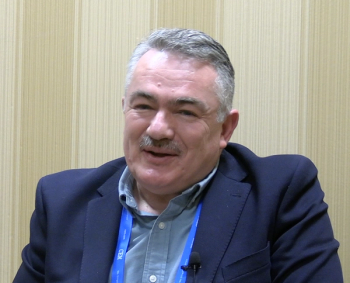
Enabling the Quantitative Detection of Raw Ore Turquoise Using Laser-Induced Breakdown Spectroscopy
Researchers have successfully applied laser-induced breakdown spectroscopy (LIBS) technology to quantitatively detect raw ore turquoise, a key ingredient in Tibetan medicines.
Applying laser-induced breakdown spectroscopy (LIBS) in detecting raw ore turquoise can have a major impact in assessing its quality, according to a recent study in Applied Spectroscopy (1). In the study, the research team from South-Central Min Zu University and the China Tibetology Research Center created a new model based on the intensities of four characteristic Al and Cu spectral lines found in samples with varying turquoise contents (1). This model was used to project the turquoise content in the samples being tested (1).
This study is important because turquoise is a major ingredient in some Tibetan medicines, so it has ramifications for human health. The research team sought to improve on traditional data analysis methods for evaluating turquoise content. The problem with the traditional methods is they contained matrix effects, so they were unable to meet the practical requirements of modern Tibetan medicine factories (1). By introducing the correlation coefficient (ρ) as an evaluation index in pattern recognition techniques, the researchers were able to overcome this issue (1).
Using the model based on the Al and Cu spectral lines, the research team estimated the turquoise content in the samples being tested. A total of 126 raw ore samples from 42 different areas in China were subjected to LIBS analysis, and the turquoise content was evaluated using a self-developed software, yielding an error rate of less than 10% (1).
Although the testing method and processes used in the study were effective at qualitative analysis of turquoise, the results indicate that the methods presented here could be used to evaluate the composition of other minerals, suggesting the method has broader applicability. As a result, the successful application of LIBS technology in quantitative turquoise detection is an advancement in medicine and in mineral analysis (1). Using LIBS technology enabled accurate assessment of turquoise content in raw ore samples, which is important when it comes to the production of Tibetan medicines (1).
Although further research and development are needed to expand the application of LIBS technology, this study marks a crucial step towards the modernization and advancement of Tibetan medicines. The researchers anticipate that their findings will not only benefit the Tibetan medicine industry, but also inspire new applications and innovations in the field of mineral composition analysis (1).
Reference
(1) Wu, J.; Wang, J.; Xiong, W.; Feng, X.; Lin, Z. Quantitative Detection of the Raw Ore Turquoise Based on Laser-Induced Breakdown Spectroscopy Technology. Appl. Spectrosc. 2023, ASAP. DOI:
Newsletter
Get essential updates on the latest spectroscopy technologies, regulatory standards, and best practices—subscribe today to Spectroscopy.




